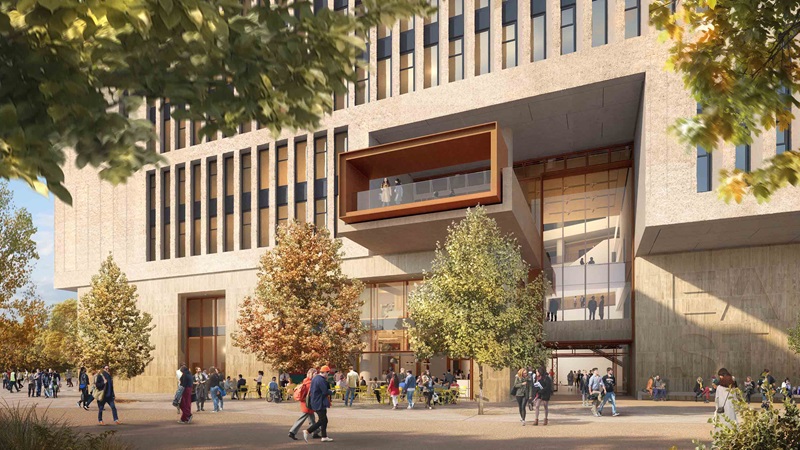Building futures: how estates directors can deliver net zero
University estates are facing their biggest challenge over the next decade driven by investors, public opinion and, importantly, students. While hot on the agenda for all industries, decarbonisation presents both a fundamental opportunity and challenge in equal measure for universities. Terry Spraggett, Director of Public Estates, Research, Education, Arts and Culture and Healthcare (PREACH) at Mace discusses the critical role of estate leads, the impact that the construction industry can have, and the approach that will drive success.
As owners and operators of broad estates, universities have the opportunity to lead from the front, to demonstrate action on a truly impactful scale.
However, the challenge of aging property portfolios, many of which include listed buildings, coupled with increasing utility costs and reduced government funding, is understandably sending many estate leads into a spin.
Radical change is needed, and at speed, but it’s a change in approach that will turn the tide.
The construction industry has long had a reputation for tradition; one of delivery but not necessarily one of innovation. However, over the last few years, there has been a strong focus on research and development – ploughing large-scale investment into trials - and it’s now paying dividends.
For the higher education sector, the answer to carbon reduction lies in tapping into this resource, as well as being mindful of the opportunities to directly control impactful change.
Understand your risk profile
The biggest threat to success remains the scale of aging estates; buildings that are no longer viable and pose a long-term reputational and commercial risk. The UK Green Building Council states that 80% of the buildings in 2050 are present today so our priority must be to decarbonise our stock.
Retrofit versus new build has to be the answer, but so often the associated costs act as a deterrent. In reality it is rarely the case that retrofit is less commercially viable than new, particularly when you apply a carbon tax. Technology has advanced in the last few years and economies of scale are finally driving down costs.
Data-based decision making is key. Firstly, tracking where improvements are needed, so that where retrofit is viable, action is taken sooner rather than later. And secondly, for the early identification of properties which may be sold on. The opportunity here being to minimise the risk of being left holding stranded assets as new regulations come into play.
Draw on your students’ energy and ambition
Students are in the driving seat. They know what they want, aren’t afraid to speak out and will vote with their feet.
Universities are in a unique position with direct access to the most engaged generation, not only passionate, but highly knowledgeable about climate change and the developing solutions. This impactful audience group just happens to be the end user too so it would be remiss to not collaborate with such an educated resource who often see opportunities where we see challenges, and whom will share their views publicly if they aren’t listened to (e.g. https://peopleandplanet.org/university-league).
Last year, students came together as part of COP26 to call for better access to educational opportunities to prepare them more broadly for the climate crisis. It is important that we listen and respond to such calls through our respective industries.
Be a challenging client
The construction industry is transforming at a rate of knots in its endeavours to reduce its carbon footprint. Clean tech, zero diesel sites, smart facilities management systems to name a few. With emerging technology that automates programmes over large, complex portfolios, innovative design and delivery methods that impact quality, time and cost as well as carbon emissions, and low-carbon material alternatives; the solutions are no longer pipe dreams.
As a client, early engagement and demand is critical to success. Push for more. Ask for more ambitious plans, demand to see the data, request evidence and pledge support. Universities are yet to reach a unanimous agreement on exactly how, and when, the sector will reach net zero. In the meantime, the world is speeding towards action and students are clear what matters to them. Waiting for the answer isn’t an option - reaching out for it is.
This article was originally published via Times Higher Education:
www.timeshighereducation.com/campus/building-futures-how-estates-directors-can-deliver-net-zero












